After updating our project from 3.3.2 to 4.2.2 we are experincing a few issues that are not described in the guides for either angular or backend but they seem to be related to abp packages.
Attempting to open "Manage profile page" produces the following error:
AbpException: Could not find the bundle file '/libs/cropperjs/css/cropper.min.css' from IWebContentFileProvider
Volo.Abp.AspNetCore.Mvc.UI.Bundling.TagHelpers.AbpTagHelperResourceService.ProcessAsync(ViewContext viewContext, TagHelperContext context, TagHelperOutput output, List<BundleTagHelperItem> bundleItems, string bundleName)
Volo.Abp.AspNetCore.Mvc.UI.Bundling.TagHelpers.AbpBundleTagHelperService<TTagHelper, TService>.ProcessAsync(TagHelperContext context, TagHelperOutput output)
Microsoft.AspNetCore.Razor.Runtime.TagHelpers.TagHelperRunner.<RunAsync>g__Awaited|0_0(Task task, TagHelperExecutionContext executionContext, int i, int count)
AspNetCore.Pages_Account_Manage.<ExecuteAsync>b__16_0()
Microsoft.AspNetCore.Mvc.Razor.RazorPage.RenderSectionAsyncCore(string sectionName, bool required)
AspNetCore.Themes_Lepton_Layouts_Application_Default+<>c__DisplayClass28_0+<<ExecuteAsync>b__0>d.MoveNext()
Microsoft.AspNetCore.Razor.Runtime.TagHelpers.TagHelperExecutionContext.SetOutputContentAsync()
AspNetCore.Themes_Lepton_Layouts_Application_Default.ExecuteAsync()
Microsoft.AspNetCore.Mvc.Razor.RazorView.RenderPageCoreAsync(IRazorPage page, ViewContext context)
Microsoft.AspNetCore.Mvc.Razor.RazorView.RenderPageAsync(IRazorPage page, ViewContext context, bool invokeViewStarts)
Microsoft.AspNetCore.Mvc.Razor.RazorView.RenderLayoutAsync(ViewContext context, ViewBufferTextWriter bodyWriter)
Microsoft.AspNetCore.Mvc.Razor.RazorView.RenderAsync(ViewContext context)
Microsoft.AspNetCore.Mvc.ViewFeatures.ViewExecutor.ExecuteAsync(ViewContext viewContext, string contentType, Nullable<int> statusCode)
Microsoft.AspNetCore.Mvc.ViewFeatures.ViewExecutor.ExecuteAsync(ViewContext viewContext, string contentType, Nullable<int> statusCode)
Microsoft.AspNetCore.Mvc.Infrastructure.ResourceInvoker.<InvokeNextResultFilterAsync>g__Awaited|29_0<TFilter, TFilterAsync>(ResourceInvoker invoker, Task lastTask, State next, Scope scope, object state, bool isCompleted)
Microsoft.AspNetCore.Mvc.Infrastructure.ResourceInvoker.Rethrow(ResultExecutedContextSealed context)
Microsoft.AspNetCore.Mvc.Infrastructure.ResourceInvoker.ResultNext<TFilter, TFilterAsync>(ref State next, ref Scope scope, ref object state, ref bool isCompleted)
Microsoft.AspNetCore.Mvc.Infrastructure.ResourceInvoker.<InvokeResultFilters>g__Awaited|27_0(ResourceInvoker invoker, Task lastTask, State next, Scope scope, object state, bool isCompleted)
Microsoft.AspNetCore.Mvc.Infrastructure.ResourceInvoker.<InvokeNextResourceFilter>g__Awaited|24_0(ResourceInvoker invoker, Task lastTask, State next, Scope scope, object state, bool isCompleted)
Microsoft.AspNetCore.Mvc.Infrastructure.ResourceInvoker.Rethrow(ResourceExecutedContextSealed context)
Microsoft.AspNetCore.Mvc.Infrastructure.ResourceInvoker.Next(ref State next, ref Scope scope, ref object state, ref bool isCompleted)
Microsoft.AspNetCore.Mvc.Infrastructure.ResourceInvoker.<InvokeFilterPipelineAsync>g__Awaited|19_0(ResourceInvoker invoker, Task lastTask, State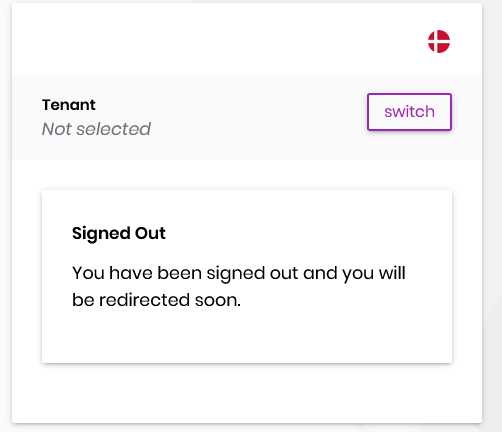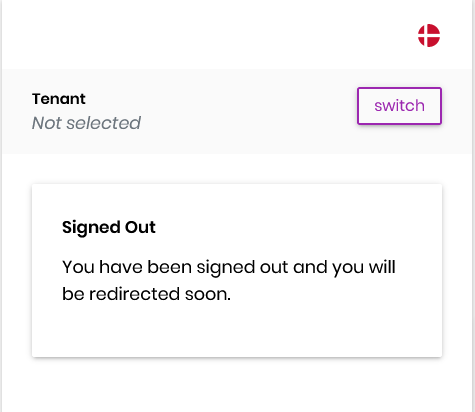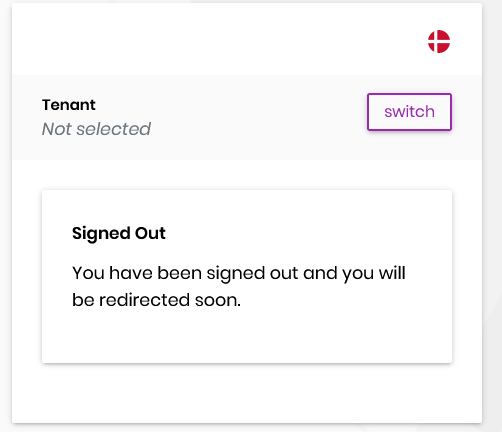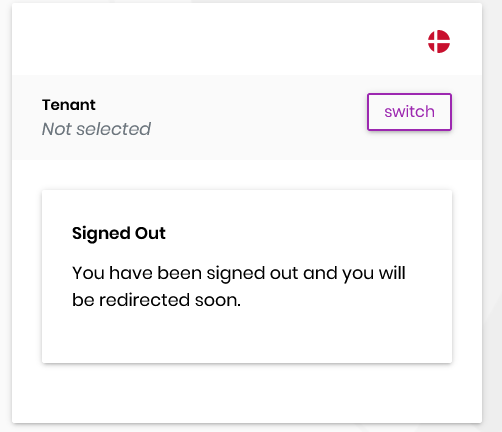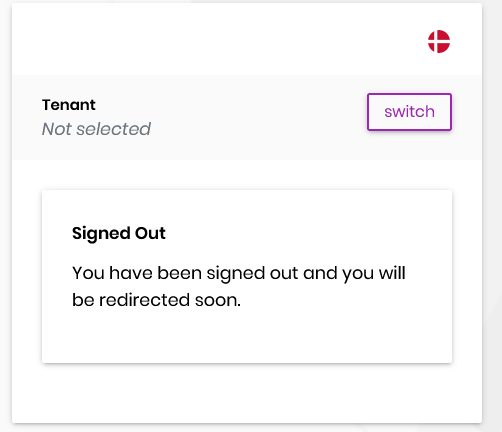 next, Scope scope, object state, bool isCompleted)
Microsoft.AspNetCore.Mvc.Infrastructure.ResourceInvoker.<InvokeAsync>g__Logged|17_1(ResourceInvoker invoker)
Microsoft.AspNetCore.Routing.EndpointMiddleware.<Invoke>g__AwaitRequestTask|6_0(Endpoint endpoint, Task requestTask, ILogger logger)
Volo.Abp.AspNetCore.Auditing.AbpAuditingMiddleware.InvokeAsync(HttpContext context, RequestDelegate next)
Volo.Abp.AspNetCore.Auditing.AbpAuditingMiddleware.InvokeAsync(HttpContext context, RequestDelegate next)
Microsoft.AspNetCore.Builder.UseMiddlewareExtensions+<>c__DisplayClass6_1+<<UseMiddlewareInterface>b__1>d.MoveNext()
Swashbuckle.AspNetCore.SwaggerUI.SwaggerUIMiddleware.Invoke(HttpContext httpContext)
Swashbuckle.AspNetCore.Swagger.SwaggerMiddleware.Invoke(HttpContext httpContext, ISwaggerProvider swaggerProvider)
Microsoft.AspNetCore.Authorization.Policy.AuthorizationMiddlewareResultHandler.HandleAsync(RequestDelegate next, HttpContext context, AuthorizationPolicy policy, PolicyAuthorizationResult authorizeResult)
Microsoft.AspNetCore.Authorization.AuthorizationMiddleware.Invoke(HttpContext context)
IdentityServer4.Hosting.IdentityServerMiddleware.Invoke(HttpContext context, IEndpointRouter router, IUserSession session, IEventService events, IBackChannelLogoutService backChannelLogoutService)
IdentityServer4.Hosting.MutualTlsEndpointMiddleware.Invoke(HttpContext context, IAuthenticationSchemeProvider schemes)
Microsoft.AspNetCore.Authentication.AuthenticationMiddleware.Invoke(HttpContext context)
IdentityServer4.Hosting.BaseUrlMiddleware.Invoke(HttpContext context)
Volo.Abp.AspNetCore.MultiTenancy.MultiTenancyMiddleware.InvokeAsync(HttpContext context, RequestDelegate next)
Microsoft.AspNetCore.Builder.UseMiddlewareExtensions+<>c__DisplayClass6_1+<<UseMiddlewareInterface>b__1>d.MoveNext()
Microsoft.AspNetCore.Builder.ApplicationBuilderAbpJwtTokenMiddlewareExtension+<>c__DisplayClass0_0+<<UseJwtTokenMiddleware>b__0>d.MoveNext()
Microsoft.AspNetCore.Authentication.AuthenticationMiddleware.Invoke(HttpContext context)
Microsoft.AspNetCore.Localization.RequestLocalizationMiddleware.Invoke(HttpContext context)
Microsoft.AspNetCore.RequestLocalization.AbpRequestLocalizationMiddleware.InvokeAsync(HttpContext context, RequestDelegate next)
Microsoft.AspNetCore.Builder.UseMiddlewareExtensions+<>c__DisplayClass6_1+<<UseMiddlewareInterface>b__1>d.MoveNext()
Microsoft.AspNetCore.Diagnostics.DeveloperExceptionPageMiddleware.Invoke(HttpContext context)
This issue seems to be similar to the one described in this thread however following the steps the solution that "hikalkan" suggested doesn't fix my issue unfortunately.
Opening any pages from the side menu other than dashboard and the pages related to administration produces an error from the lepton theme package and opens a blank page
Endpoints used in any of these pages is working as intended so I don't think its related to the backend.
Attempting to logout as any user doesn't redirect to login page and produces a js error:


The error originates from this line in LoggedOut
 When looking through the html I am unable to find any button with this ID and its clearly not visible on the page.
The button is however present on our production environemt currently running Abp v3.3.3.
What could have resulted in this button being removed?
When looking through the html I am unable to find any button with this ID and its clearly not visible on the page.
The button is however present on our production environemt currently running Abp v3.3.3.
What could have resulted in this button being removed?
Hi,
Thank you for the answer.
So there is currently no way of customizing the email sent for email security code, even just the translation?
Also, how about translation of the templates that exists? Should translation simply be done by adding the localization keys to the json file of my own culture, and then the module will pick that up? That doesn't seem to work for me.
Im attempting to override existing email templates based on the instructions described in the text templating document and the emailing document.
I was able to override the standard layout by following the instructions in this section (tried both options) but I don't feel like the documentation is very clear on how I should override specific templates such as the one used for sending two-factor codes.
.tpl file
<!DOCTYPE html>
<html lang="en" xmlns="http://www.w3.org/1999/xhtml">
<head>
<meta charset="utf-8" />
</head>
<body>
<h1>This my header</h1>
{{content}}
<footer>
This is my footer...
</footer>
</body>
</html>
DefinitionProvider.cs
public class TwoFactorSendCodeDefinitionProvider : TemplateDefinitionProvider, ITransientDependency
{
public override void Define(ITemplateDefinitionContext context)
{
var emailLayoutTemplate = context.GetOrNull(StandardEmailTemplates.Layout);
emailLayoutTemplate.WithVirtualFilePath("/Emailing/Templates/TwoFactorSendCoreTemplate.tpl", true);
}
}
I was not able to find the source code of the email template used for sending two-factor codes in any ABP module. I want to know how I can I find this template and how I should override its .tpl file like in the example above.
Im aware of the "Text template management" that is provided with the account module but only a few templates can be edited:
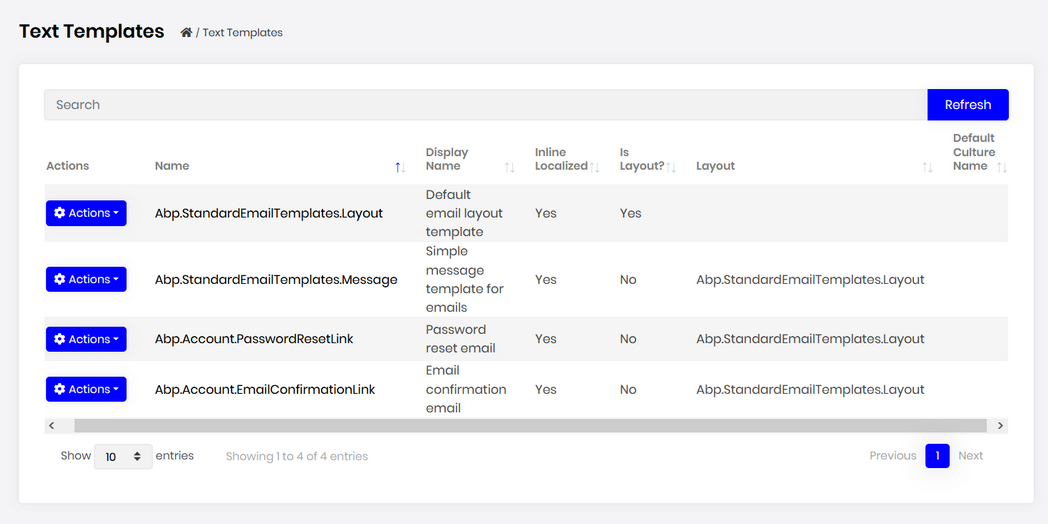
I would also like to know how I should translate the text used in templates. Since I can't find the .tpl files, im unable to view the localization keys I should use to enable translation of emails. "Text template management" shows localization keys for some .tpl files like "PasswordResetLink" but adding these keys to my json localization files in my "Shared" project doesn't affect the emails that are sent.
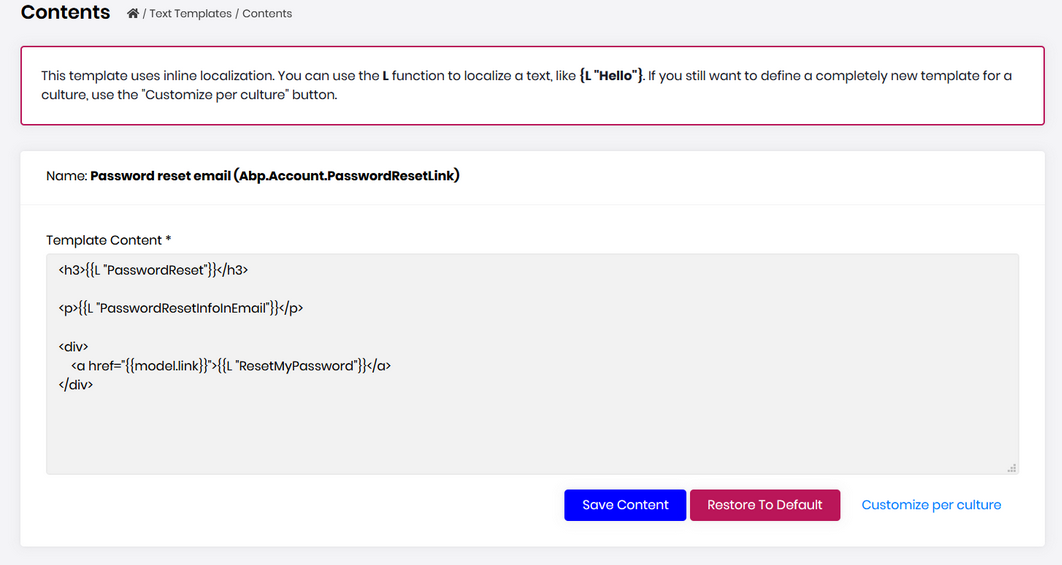
I should have mentioned that I was already doing that. Translation is not working even with injection of IHtmlLocalizer<WebResource> in the login razor page.
I believe I have followed the steps described in the documentation. Perhaps we can solve this with a remote session?
Hi, thank you for directing me to the documents.
I have followed the steps to inherit from other resources for translation of the account module. However the translation to my language doesn't seem to work. Perhaps I have misunderstood something?
HttpApiHostModule configuration:

Notice that I have created a new Resource file in the "HttpApi.Host" project and not in the "Shared" project along with my other translation, because this module has references to the Account module. Is this correct?
"RememberMe" text is not translated
I have successfully edited the login page by following the steps discussed in this thread.
Now I wish to translate the text used in the account module for the login page. How do I do this properly?
Example:
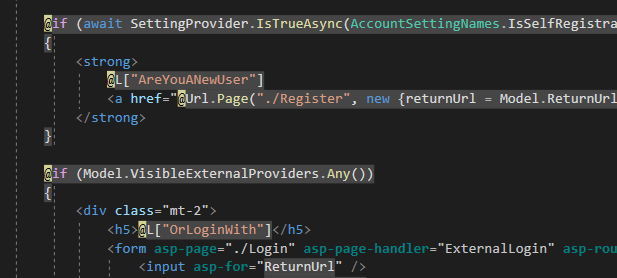 I want to define translations for "AreYouANewUser" and "OrLoginWith" in a new language.
I want to define translations for "AreYouANewUser" and "OrLoginWith" in a new language.
Also how should I translate values related to validation?
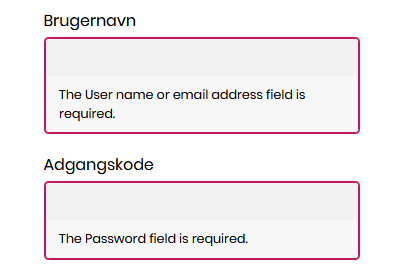

@apporva.lele
I think this is what you are looking for?
@alper Thank you, following the steps you described seems to have solved the issue for me. I am now able to generate entities without errors using ABP suite version 3.3.x.
ABP suite is however still showing my project as having version 3.1.0:
I guess that is not really an issue but would it have any negative consequences if I manually edited the appsettings.json file?
Updating solution from ABP version 3.1.0 to 3.3.0 with suite or "abp update" command doesn't seem to work properly. After updating, the project is still shown as having version 3.1.0 in the suite:
Generating new entities with ABP suite version 3.3.0 after updating project also creates the following error:
Cannot read the template Volo.Abp.Commercial.SuiteTemplates.Templates.Server.Controller.ItemController_Attributes_App.txt
I have tried updating the project with the suite as suggested here and with the ABP CLI command as suggested here.
I also tried reinstalling the suite. I am able to generate new entities with the suite version 3.1.0 even though I have updated the project to 3.3.0
Current project verison: V3.3.0 Frontend type: Angular

